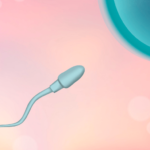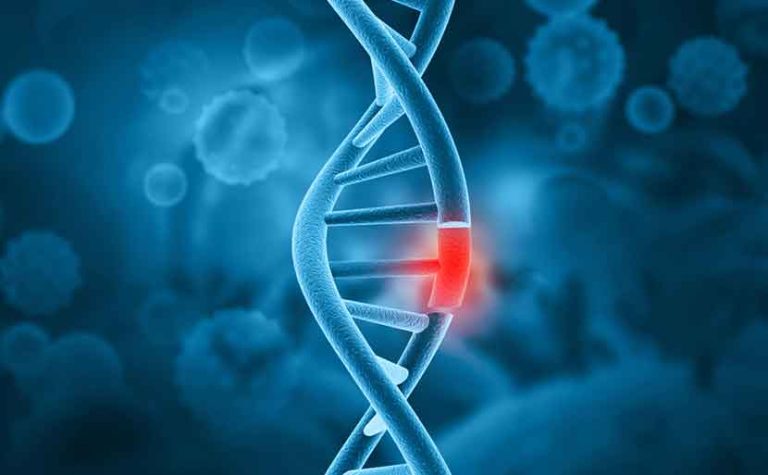- Introduction
- Types of NIPT (new type prenatal diagnosis) test results
- If the NIPT (New Prenatal Testing) result is positive
- Is there a possibility that the result of NIPT (New Prenatal Testing) is false negative?
- If the NIPT (New Prenatal Testing) test result is false positive
- Precautions when taking a definitive test
- How can I correctly understand the results of NIPT (New Prenatal Testing)?
- Summary
Introduction
Congratulations on your pregnancy.
As you think about your baby, do you worry, “Is the baby in my belly healthy?” or “Is he/she sick?”
There are various methods of testing to check for illnesses in the baby in the womb. Among them, ” NIPT (non-invasive prenatal testing) ” is a recommended testing method at Hiro Clinic because it can be done without burdening either the baby or the mother .
In this article, we will clearly explain the types of NIPT (non-invasive prenatal testing) test results, how to interpret them, and points to note.
Types of NIPT (New Prenatal Test) Test Results
NIPT (non-invasive prenatal testing) is one of the prenatal tests that pregnant women undergo. It is performed to check for the possibility of chromosomal or genetic abnormalities in the fetus by taking a sample of the mother’s blood and analyzing the fetal DNA in the blood.
There are two types of prenatal testing: “non-definitive tests” that can detect the possibility of chromosomal abnormalities, and “definitive tests” that can detect chromosomal abnormalities with certainty.
There are the following types of tests:
| Non-deterministic query | Assessing the possibility of chromosomal disease by ultrasound examination (early NT, etc.) |
|---|---|
| Maternal serum marker test (Quatro test, triple marker test) | |
| Combined inspection | |
| Maternal blood fetal chromosome test (NIPT is also positioned here) | |
| Deterministic test | Villus test (11 weeks to 14 weeks) |
| Amniocentesis (after 15 weeks) |
Non-definitive tests examine the condition of the fetus using indirect methods such as blood sampling and ultrasound. There is no risk of miscarriage, and these tests can be performed safely for both the fetus and the mother. If a chromosomal abnormality is identified in a non-definitive test, a definitive test must be performed to more accurately determine the chromosomal abnormality.
The results of NIPT (New Prenatal Testing) can be known 1 to 2 weeks after the test. The results are judged as “positive” or “negative.” If there is a high possibility of chromosomal abnormalities, it is judged as “positive,” and if there is a low possibility, it is judged as “negative.”
How to interpret NIPT (new type prenatal testing) test results
NIPT (new type prenatal testing) measures the number of DNA in each chromosome and determines whether the result is positive or negative based on whether the value is within or outside the standard range.
What does a “negative” NIPT (non-invasive prenatal testing) test result mean?
If the test result is within the standard range, the result is deemed “negative” and the possibility of a chromosomal disorder is considered low.
What does a “positive” NIPT (non-invasive prenatal testing) test result mean?
If the test result is outside the standard range, the result is deemed “positive” and there is a high possibility of a chromosomal disorder.
What if the NIPT (new type prenatal testing) test result is a “retest”?
When you see a result that says “retest,” you may be worried about whether the test was successful. In very rare cases, NIPT (non-invasive prenatal testing) may result in a “retest.”
The following are cases where a “retest” is likely to be required:
- The amount of baby’s DNA in the sample (blood) is lower than the standard
- I can’t take the test because of the medication I’m taking
There are various other reasons why you may need to be “tested again.” At Hiro Clinic NIPT , we will carefully explain the reason for the test and how to proceed with future tests.

If the result of NIPT (new type prenatal testing) is positive
” NIPT (New Prenatal Testing) Positive” means “there is a high possibility of chromosomal abnormality.” Therefore, just because the NIPT (New Prenatal Testing) is positive does not mean that “there is definitely a chromosomal disease.”
For example, even if a 35-year-old pregnant woman is diagnosed as positive for Trisomy 21 (Down Syndrome) , the probability that the baby actually has a chromosomal disorder is 80%. Approximately 20% of babies have no chromosomal abnormalities.
If the NIPT (non-invasive prenatal testing) test is positive, it is necessary to accurately check whether there are any chromosomal abnormalities. Here, we will explain step by step what to do if the NIPT (non-invasive prenatal testing) test is positive.
If it’s positive, get an amniocentesis
NIPT (New Prenatal Testing) is a non-definitive test. It is necessary to undergo a definitive test to determine whether there is truly a chromosomal abnormality. This is because even if you are diagnosed with a positive NIPT (New Prenatal Testing) result, there is a possibility of a false positive, where a positive result is diagnosed for various reasons. At
Hiro Clinic NIPT , we recommend that those who are diagnosed with a positive result undergo an amniocentesis as a definitive test.
Amniocentesis is a test that can be taken after the 15th week of pregnancy. A needle is inserted directly into the mother’s abdomen to collect amniotic fluid, which is then used to examine the baby’s chromosomes. Because the baby’s chromosomes are extracted and examined, chromosomal and genetic abnormalities can be detected more accurately.
We have set up an amniocentesis support system for amniocentesis. Those who receive a positive NIPT (non-invasive prenatal testing) test result can receive up to 200,000 yen (tax included) in support of the amniocentesis cost.
Get genetic counseling
The benefits of genetic counselling include:
- Learn about genetic disorders and diseases
- Learn about information based on scientific evidence and the latest research and knowledge
- You can ask questions about your illness
- Psychological and social support available

In general, there are two types of genetic counseling:
Pre-test genetic counseling
This is genetic counseling that takes place before undergoing prenatal testing. Currently, Hiro Clinic NIPT does not offer pre-test genetic counseling, but in general pre-test genetic counseling, the following will be discussed:
- Purpose of receiving genetic counseling
- Family or personal illnesses, pregnancy and delivery history
- Purpose of the test
- Types of chromosomal and genetic abnormalities examined
- What to do if an inspection is not performed
- What to do after the test
The contents of the pre-test genetic counseling are not only about “taking the test.” We also explain “what to do depending on the test results.”
Post-test genetic counseling
This is genetic counseling that is given after prenatal testing. In general, post-test genetic counseling will explain the following:
- Test results
- Risk of chromosomal and genetic abnormalities revealed by test results
- Future treatment and policy
In the post-test genetic counseling, not only the test results are explained, but also the steps to follow. Depending on the results, you may need to undergo another NIPT (non-invasive prenatal screening) , a definitive test (amniotic fluid test), or more detailed investigations.
Currently, Hiro Clinic NIPT offers post-test consultations and counseling. If you wish, you can make a reservation and be examined by a doctor on staff.
Why is the Hiro Clinic NIPT positive score report meaningful?
We provide Hiro Clinic NIPT’s original “Positive Score Report” which combines the “positive score” and “positive hit rate” from the results of over 10,000 NIPT (new prenatal testing) cases .
The “positive score” is a number that measures how far away you are from the “cutoff value,” which is the boundary between positive and negative.
The higher the number, the farther away you are from the cutoff value.
Hiro Clinic NIPT’s “positive score report” clearly summarizes where your positive score is on the table. Knowing your own positive score can help you decide whether or not to have an amniocentesis.
Conditions for issuing a positive score report
Hiro Clinic NIPT positive score reports are issued free of charge with all plans except for tests that do not include trisomies 21 and 18.
If the test result is positive for trisomy 21 or trisomy 18, it will be attached to the test result. If you have any questions about the positive score report , please consult your doctor, nurse, or genetic counselor.
For more information about Hiro Clinic NIPT positive score reports , please see this page.
Are there cases where NIPT (new type prenatal testing) results are false negative?
In very rare cases, a negative result may be obtained even though the patient has a chromosomal disorder. This is called a “false negative.”
What causes false negative results in NIPT (new type prenatal testing)?
Most false negative results occur when the pregnancy is too early and the mother has too few chromosomes in her blood.
What happens if the NIPT (non-invasive prenatal testing) test result is a false negative?
A false negative result can result in the baby being born with some kind of chromosomal abnormality or genetic disease.
Probability of false negative results for NIPT (new type prenatal testing)
The negative predictive rate of NIPT is 99.99%. According to a report by the Ministry of Health, Labor and Welfare, out of 37,243 NIPT (new prenatal diagnosis) cases, there were 4 false negative cases (0.01%).
The remaining 0.01%, or 1 in 1,000 people, may have a false negative result.
However , NIPT (non-invasive prenatal testing) is a non-definitive test with a high degree of accuracy compared to other prenatal tests.
It is known that the probability that a baby will have a chromosomal abnormality or genetic disease is extremely low.
Furthermore, in genetic counseling, the results of NIPT (non-invasive prenatal testing) are explained in more detail.
We also talk about the risk of genetic diseases and chromosomal abnormalities, and the consideration of definitive testing, so please feel free to consult us if you have any concerns.
If you would like to know more about false negatives in NIPT (non-invasive prenatal testing) , please see this page.
When the NIPT (New Prenatal Test) Test Result is False Positive
A “false positive” means that a “positive” result is returned, but a definitive test finds no chromosomal or genetic abnormalities. In fact, NIPT (non-invasive prenatal testing) has a high “negative predictive value” of 99.99%, but the “positive predictive value” varies from 50% to 90%. Even when testing for
the same Trisomy 21 (Down Syndrome) , the positive predictive value differs depending on age, as shown below.
| Age | Positive hit rate |
|---|---|
| 25 years old | 49.8% |
| 35 years old | 76.7% |
| 40 years old | 90.9% |
For a 25-year-old pregnant woman, even if the NIPT (non-invasive prenatal testing) test is positive, there is only a 50% chance that a definitive test will actually show that she has trisomy 21 (Down syndrome ).
For the remaining pregnant women, the NIPT (non-invasive prenatal testing) will be judged as positive even though they do not have trisomy 21 (Down syndrome) . For other chromosomes, the positive predictive rate is lower, so false positives are more likely to occur. Therefore, if the result is judged to be positive, it is necessary to examine the baby’s chromosomes and genes with a definitive test.
If you would like to know more about false positives in NIPT (non-invasive prenatal testing) , please see this page.
Precautions when undergoing definitive testing
There are two types of definitive tests: amniocentesis and chorionic villus sampling.
Please note the following points when undergoing these tests.
- There are set number of weeks during which you can take the test.
- It is invasive as it involves inserting a needle directly into the mother’s abdomen.
- Risk of miscarriage and infection
While you are wondering whether you should take a definitive test, the number of weeks during which the test can be taken may pass. If you have
any questions about definitive testing, please consult with your doctor, nurse, or genetic counselor.
How can I correctly understand the results of NIPT (non-invasive prenatal testing)?
Many pregnant women feel that it is difficult to understand the meaning of the NIPT (new type prenatal testing) test results, or that the results are okay. At Hiro Clinic NIPT, we provide original support in the form of a ” positive score report ” and ” genetic counseling ” to help you correctly understand the results . You
have taken the trouble to undergo NIPT (new type prenatal testing) . Make sure you correctly understand the results and the condition of your baby.
summary
This time, we explained how to interpret the test results of NIPT (non-invasive prenatal testing) and points to note. It may be difficult to understand what the test results of
NIPT (non-invasive prenatal testing) mean just from the words “positive,” “negative,” and “retest.” Furthermore, some mothers may be anxious about the need to undergo a definitive test depending on the test results. Hiro Clinic NIPT has a complete support system in place to help mothers correctly understand the test results and get pregnant and give birth without any worries.
It’s important to make informed decisions about your baby’s condition based on accurate information.
[References]
- Ministry of Health, Labor and Welfare – 1st Working Group on Surveys of Prenatal Genetic Testing (NIPT) Using Maternal Blood [Document 3] Documents submitted by Member Sekizawa
- Japan Society of Obstetrics and Gynecology – Background and current status of the revision of the guidelines for “Prenatal Genetic Testing Using Maternal Blood (NIPT)”
Q&A
-
QWhat does a “positive” NIPT result mean?A “positive” result indicates that there is a high probability that a chromosomal abnormality is present in the fetus. However, it is not definitive, and a definitive diagnosis such as an amniotic fluid test is required.
-
QWhat does “negative” NIPT result mean?A “negative” result indicates that there is a low probability of chromosomal abnormalities in the fetus. However, it does not rule out all abnormalities.
-
QWhy are NIPT results “retested”?Retest” may occur when the baby's DNA levels do not meet the standard values or when there are factors that affect the test.
-
QWhat is the “positive predictive value” of NIPT?The positive predictive value indicates the probability that a positive NIPT result actually indicates a chromosomal abnormality. It depends on the age of the patient and the disease for which the test is performed.
-
QWhat should I do next if I get a positive result from NIPT?It is recommended to undergo a definitive diagnosis, such as an amniotic fluid test or a chorionic villus test.
-
QWhat should I do if the NIPT result is a “false positive”?In the case of a false-positive result, the fetus has no chromosomal abnormality, so it is important to resolve the concern as soon as the confirmed diagnosis is found to be normal.
-
QWhat is the likelihood of a “false negative” NIPT result?The false negative rate of NIPT is very low, about 0.01%, but cannot be completely eliminated.
-
QWhat is “genetic counseling” based on NIPT results?Genetic counseling is a service in which a specialist provides advice on test interpretation and next steps based on the NIPT results.
-
QHow are NIPT results notified?You will be notified of your test results through your health care provider as a positive, negative, or retest. Results usually take several days to a week.
-
QWhat should I do if the NIPT results are inconclusive?If the results are inconclusive, you have the option of retesting or taking another test. It is important to consult with your doctor before proceeding.
-
QWhat is the probability of a “21-trisomy positive” result on NIPT?In the case of a 35-year-old pregnant woman, the hit rate of 21-trisomies when tested positive by NIPT is approximately 76.7%.
-
QWhy is it possible for a positive NIPT result to show no fetal abnormality?Because NIPT examines DNA derived from the placenta, the genetic information of the placenta and the fetus may differ, resulting in a false-positive result.
-
QAre there chromosomal abnormalities that are not detected by NIPT?Yes, NIPT is primarily a screening test for specific chromosomal abnormalities and does not detect all abnormalities.
-
QIf I test positive for 18-trisomy by NIPT, what should I do?It is necessary to receive a definitive diagnosis such as an amniotic fluid test and discuss future measures with the doctor.
-
QIf the NIPT result is positive, what will happen after delivery?Medical care and social services may be required after delivery. It is important to confirm the system of support available in advance.
-
QWhat happens if the NIPT result shows “partial deletion” or “partial duplication”?In these cases, a definitive diagnosis is still required and should be discussed with a specialist, as symptoms and effects vary on an individual basis.
-
QDoes NIPT also determine gender?Since NIPT examines sex chromosomes, it is possible to determine the sex of the fetus. However, testing for the purpose of gender determination is not recommended.
-
QAre there ways to alleviate the anxiety that pregnant women may have after receiving NIPT results?It is important to alleviate anxiety through genetic counseling, discussions with family members, and by utilizing the support of the physician.
-
QIf the NIPT results do not show any abnormality, is additional testing necessary?Even if no abnormality is detected, it is important to continue to check the condition of the fetus through antenatal checkups.
-
QWhat is the recommended method of information collection for pregnant women who have undergone NIPT?It is recommended to obtain accurate and reliable information by using materials provided by the medical institution and genetic counseling.
Article Editorial Supervisor

Dr Hiroshi Oka
NIPT specialist clinic, MD
Graduated from Keio University, School of Medicine
 中文
中文






















